This article is written specifically for those involved in vehicle-supported adventures. Proper in-field water disinfection can help you remain in the backcountry for an extended period of time, eliminating the need to pull camp and return to civilization to replenish potable water needs. This article contains only a portion of the information available on in-field water disinfection. A complete treatise on the subject is not possible here. Bob Wohler’s new Off-Road & Overland Adventure Info Book Belly Up to the Tainted Water Source… If You Dare – Collecting, Storing, and Disinfecting Water in the Field, due out this summer, will cover the topic of back country water disinfection completely.

As with any outdoor recreation, overlanding requires potable water for washing, drinking, and cooking. Multi-day overland adventures require a thoughtful strategy for water storage, usage, and conservation. If water is needed from natural sources, your plan also needs to include disinfecting water in the field. Your disinfection goals are to eliminate most of the crunchies, critters, and chems from natural water sources. Crunchies include the sediment and inorganic material found in most natural water sources. Critters are the living microorganisms that can cause waterborne illnesses: viruses (very small), bacteria (small), and protozoa (largest of the three). Chems are dangerous inorganic elements or compounds found naturally or man-caused in water. These include petrochemicals and agricultural products found in some natural water sources.
When collecting water from any backcountry or third-world water source, consider the following:
• Not every overlander has the same level of health. If you have a compromised immune system, consider treating all water prior to drinking. Younger and healthier individuals may be able to drink water with some contaminates and remains healthy. But note that deciding not to treat an unknown water source is a risk.
• There is no easy field test for levels of biological or chemical contaminates in water, so you must evaluate your risk based on where you are collecting it.
• As time goes by, most wilderness and urban third-world water sources are becoming more tainted and contaminated, hence the increased need for treatment of wilderness water sources.
• Carefully evaluate backcountry water sources. Look and smell for danger signs around remote water sources. Are there dead trees or animals? Does the water smell foul?
• The bottom line here is that you can never know whether any collected water is safe to drink unless you treat it.

Again, you can never know whether any collected water is safe to drink unless you treat it. However, use extra caution when collecting water under the following seven circumstances.
• In ponds or recesses, where no plants are growing nearby, or if you see the dead remains of animals.
• At or below established campsites.
• In meadows or anywhere livestock routinely grazes and lives.
• In areas where humans and pets have visited.
• Near trails that are heavily used by other backcountry explorers.
• In third-world urban areas where water is generally untreated.
• At low altitudes. The higher your journey beyond 2,000 metres/7,000 feet, the less likely contamination occurs. Recent research shows that backcountry water sources found at elevation are much cleaner than earlier believed.
General Signs and Symptoms of Ingesting Contaminated Water
You can call the illness what you want, Beaver Fever, Montezuma’s Revenge, or Delhi Belly, but the signs and symptoms are similar. There are eight general signs and symptoms of drinking tainted water. Many are often severe, extremely debilitating, and very uncomfortable. They include:
• Abdominal discomfort & cramps
• Nausea
• Loss of appetite – subsequent weight loss
• Fatigue
• Diarrhea
• Fever
• Bloating
• Flatulence
Four Basic Water Disinfection Techniques
Survival experts agree that water treatment should be a multi-step process, involving at least two of the four primary techniques to produce potable (disinfected) water:
• Heat Disinfection
• Filtering
• Chemical Disinfection
• Ultraviolet Radiation and Combined Photochemical Processes
No single water disinfection technique or piece of equipment is perfect. There are upsides and downsides to these four water disinfection techniques. The same can be said of the equipment described here, but I don’t have the space to list all the pros and cons.

If you need to source dirty water containing lots of crunchies, it is always best to pre-filter it prior to applying further treatment. Pre-filtering can be as easy as pouring the water through a T-shirt, bath towel, or coffee filters. Pre-filtering is especially important if you plan on secondary filtering with a commercial ceramic, hollow fiber, or glass fiber filter that can clog easily. It’s also important to pre-filter water if you use any treatment method using ultraviolet radiation. During UV radiation disinfection (by a UV-generating device or sunlight), the microscopic critters can “hide” behind particulates and remain viable by physically avoiding the radiation.
Prevention of Cross-Contamination
It only takes a very small amount of tainted, non-treated water to cross-contaminate treated water when using any of the primary ways of disinfecting water in the field. Water disinfected with methods other than chemicals must be kept away from possible cross contamination situations and equipment (dirty fingers, caps, bottles, bags, etc.). Recontamination of disinfected water can be a large problem with heat, filters, and UV disinfection. A little attention to anti cross-contamination procedures can reduce the risk to almost zero.
My Favorite Equipment
Described here is the equipment I use for in-field water disinfection when both hiking and filling the larger water receptacle in my off-road trailer. Some of this equipment is pricey. But, if you have ever gotten a “bug” in the backcountry by drinking naturally sourced, untreated water, the cost becomes irrelevant. Trust me on this.
MSR WindBoiler. I take my WindBoiler with me everywhere. The MSR WindBoiler is a stove “system” that is ideal for hikers and overlanders. It is perfect for boiling water, not only for drinking purposes, but also to rehydrate prepared camping food. It also makes a mean cup of coffee with the accessory coffee press. The WindBoiler’s stove, fuel canister, and pot conveniently pack together into a single grab-and-go unit.
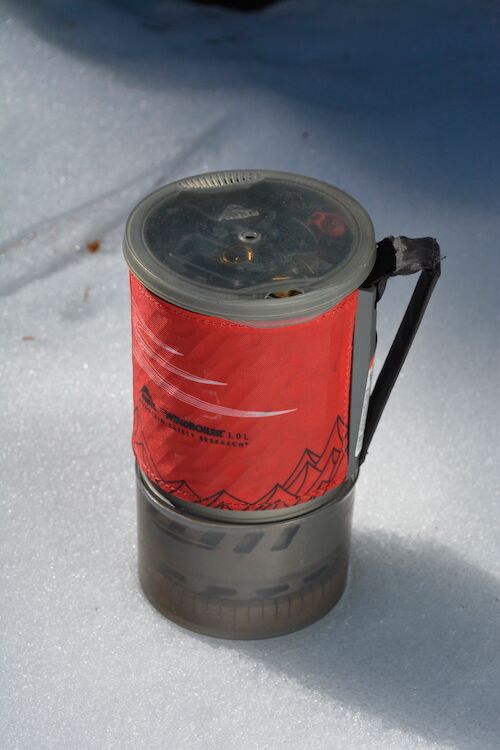
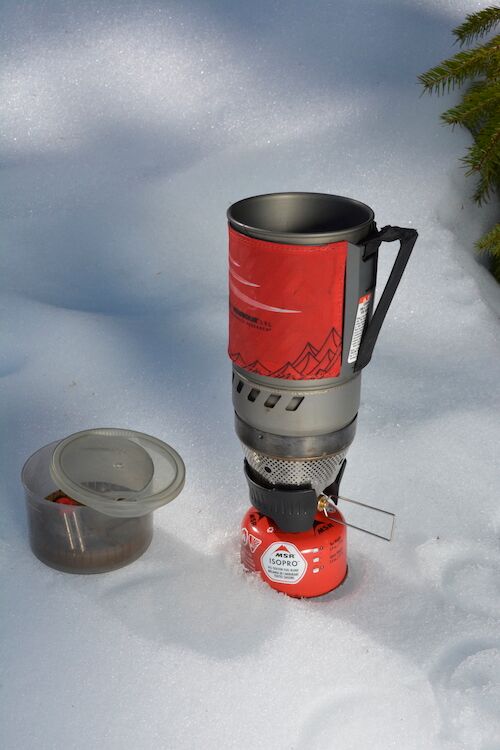
Heat disinfection is the surest method of making water sourced from the natural environment safe to drink and kill all disease-causing critters such as viruses, bacteria and protozoa (like Giardia and Cryptosporidium). At and below 2,000 metres/6,562 feet, water heated to a boil for one minute kills all living microorganisms. For higher elevations, heat water to a boil for three minutes. This is the recommendation by the U.S. Centers for Disease Control. Water does not have to be boiled for up to 10 minutes to kill microorganisms as is commonly touted. If fuel is an issue on a trip or in a survival situation, you need only pasteurize the water to disinfect it. To pasteurize water, heat it to 65° C/149° F for approximately six minutes. No need for water to boil.
LifeStraw. The LifeStraw filter is a favorite of travelers and hikers alike because of its lightweight and filtering effectiveness. I carry one in all my Bug-Out-Bags and vehicles 24/7. They can filter up to 1,000 litres/264 gallons of water, enough for one person for a year. Laboratory studies show that the LifeStraw meets EPA requirements for elimination of bacteria, Cryptosporidium and Giardia. It cannot however eliminate viruses.

MSR’s Guardian Purifier. This filter device is very unique, and I believe the best filter on the market. It can eliminate protozoa, bacteria, AND viruses (unlike the LifeStraw). Originally developed for the military, MSR brings this compact filtration technology to hikers, overlanders, and other backcountry travelers. Since filter clogging is a problem for ultrafiltration hollow fiber membranes, the Guardian’s technology incorporates a very unique (and quite wonderful) self-cleaning capability in its membrane system. The filter never needs manual or user-initiated back flushing or filter scrubbing to maintain a constant, disinfected water flow. This self-cleaning ability allows for a high volume of water production (2.5 litres/0.7 gallons per minute) with minimal effort. Over the life of its filter, the Guardian can treat over 10,000 litres/37,000 gallons of contaminated water. That’s enough treated water for four people at 4 liters/1 gallon a day, for 10 years.
The Guardian is a huge advancement in ultrafiltration technology, since all other ultrafiltration products have a limited filter cartridge life prior to clogging. According to MSR, the Guardian is also extremely durable. It is engineered to withstand heavy use, freezing, drops from 2 metres/six feet to a concrete surface, and harsh environments.
Aqua PURE by Potable Aqua. The topic of chemical disinfection with chlorine and iodine can be confusing and quite complicated. We don’t have the space here to discuss the topic in detail, however, for chemical disinfection of water I find the Aqua PURE unit very effective and easy to use.
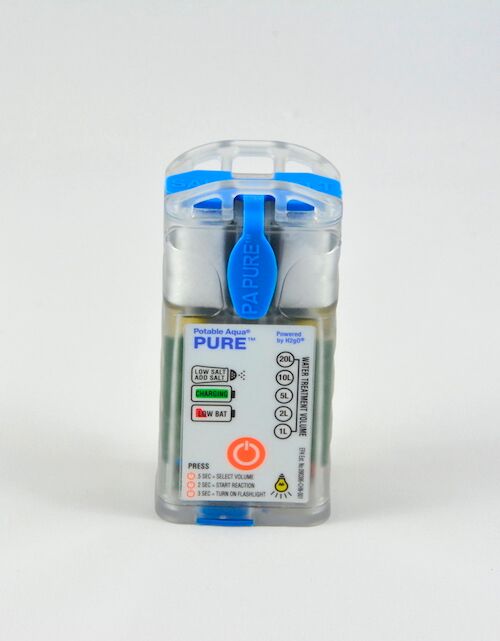
Here’s how it works. When electricity is passed through a briny solution of ordinary table salt and water, it produces a mixed oxidant solution (MOS) containing chlorine and peroxide. A small amount of this powerful mixed oxidant solution is added to a natural source of water for disinfection. As with most chemical treatments, there is a need for contact time. With an MOS, viruses and bacteria are killed after 15 minutes, Giardia after 30 minutes, and Cryptosporidium after four hours.
The Aqua PURE is compact, durable, and has rechargeable batteries. Its electronics are completely sealed in epoxy, and it even has a built in LED flashlight. The unit can treat up to 20 litres/5 gallons of source water in one cycle. Of course, you can treat more than 20 litres/5 gallons of water by dumping many cycles of mixed oxidant solution into a larger container. Besides being solar-powered, its batteries can also be recharged with a micro USB charging plug and 120v wall adapter. On a full charge, the PURE can purify more than 150 litres/40 gallons of water. With the push buttons on its face, you can select the volume of water treatment you desire, from 1 to 20 litres.
SteriPEN. I take a SteriPEN with me when I travel outside of the USA, especially to third-world countries. I use it regularly in non-alcoholic drinks ordered from cafes, hotels, and restaurants. I get lots of questions from folks when I use it in public, then they ask me if they can use it in their drink.
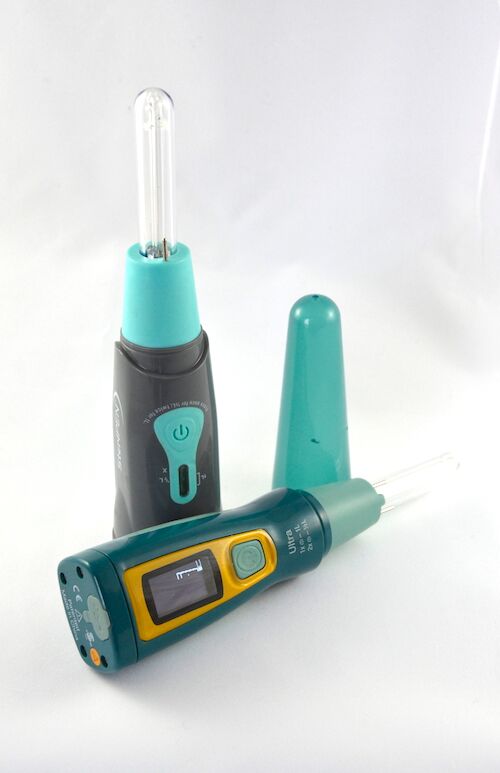
All models of SteriPENs use UV light to render microorganisms ineffective. In less than 50 seconds, the SteriPEN can treat 1 litre/32 ounces of water without a chlorine or iodine chemical taste or filter pumping. Ultraviolet (UV) germicidal radiation is harmful to all waterborne microorganisms. UV radiation treated water may be used immediately after treatment.
The Trekker by Noah Water Systems. Most of the aforementioned equipment is great for disinfecting small amounts of water, but what if you have large water cans to fill or a sizable water receptacle built into your off-road trailer or 4WD RV (think Unimog, EarthCruiser, EarthRoamer, Sportsmobile, etc.)? I have two 57 liter/15 gallon containers mounted inside my off-road trailer. For extended adventures, I fill both at home, but sometimes I run out of water in the backcountry. This means I need to replenish in the field. In this situation I have two problems: 1) Getting the water from the lake, pond, or stream easily up and into my receptacles, and 2) Disinfecting the water prior to adding it to a clean receptacle. Well, there’s an answer for these two problems – The Trekker.
The Trekker is a hardy, field-ready, self-contained system in an unbreakable hard case. It can disinfect 3.8 liters/1 gallon per minute. This system disinfects water in a four-stage process. First, water is pre-filtered with a screen at the end of the intake hose, then it flows through sediment filtration, next through granular activated carbon (GAC) filtration, and finally on to the UV treatment module. The granular activated carbon (GAC) filter reduces harmful chemicals, plus unpleasant taste and odor from the water. The UV radiation destroys all microorganisms in the water, producing potable water.
The system includes a 12-volt water pump with battery clamps and wires to be hooked to any car battery or 12-volt source. This pump can suck up water from a nearby water source; push the water through the disinfection unit, and into an elevated receptacle – jerry can or affixed container. Everything needed to disinfect water can be stored in the portable waterproof case.
In the remote backcountry, proper disinfection of sourced water from natural springs, lakes, ponds, streams and rivers cannot be over emphasized. If you don’t treat it, you can’t be sure you won’t get sick.
Article and Photos by Bob Wohlers
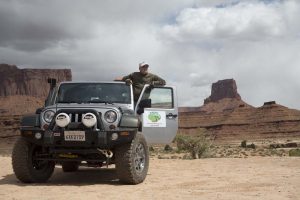 Bob Wohlers teaches corporate, government, and recreational off-road safety, survival, and wilderness first aid courses. Some of Bob’s corporate clients have included T-Mobile, Verizon, PG&E, and Southern California Edison. As a registered government contractor, he teaches courses for the National Park Service and BLM. Currently, Bob teaches monthly introductory and advanced recreational off-roading at Prairie City, a California State Recreational Vehicular Area (SRVA). He also organizes and leads groups on 4WD adventure tours into the remote backcountry. Find out more about his off-road training courses and guided adventures at discoveroffroading.com.
Bob Wohlers teaches corporate, government, and recreational off-road safety, survival, and wilderness first aid courses. Some of Bob’s corporate clients have included T-Mobile, Verizon, PG&E, and Southern California Edison. As a registered government contractor, he teaches courses for the National Park Service and BLM. Currently, Bob teaches monthly introductory and advanced recreational off-roading at Prairie City, a California State Recreational Vehicular Area (SRVA). He also organizes and leads groups on 4WD adventure tours into the remote backcountry. Find out more about his off-road training courses and guided adventures at discoveroffroading.com.
A special thanks to Susan and Bill Dragoo who modeled for me in most of these photos as we explored Kokopelli’s Trail in Utah. As you can see, we were very thirsty.
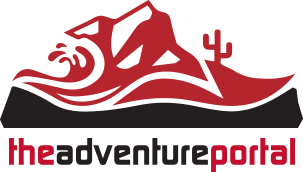






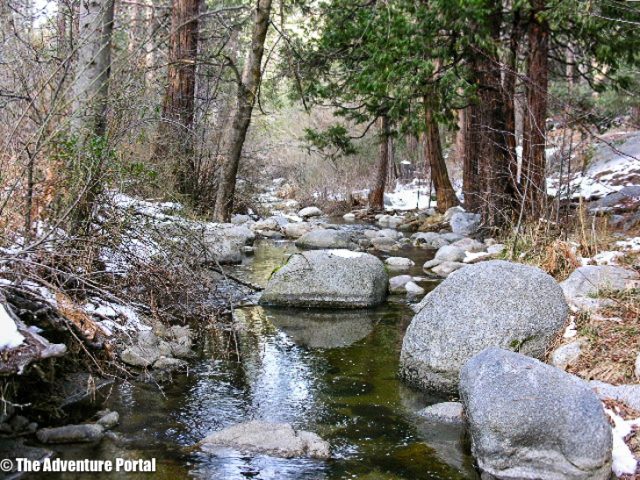

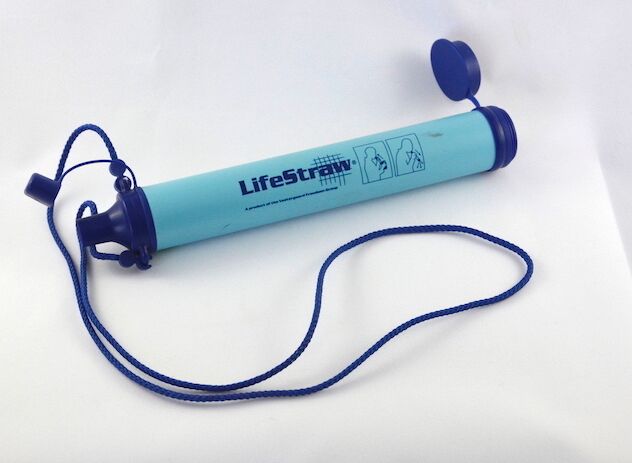
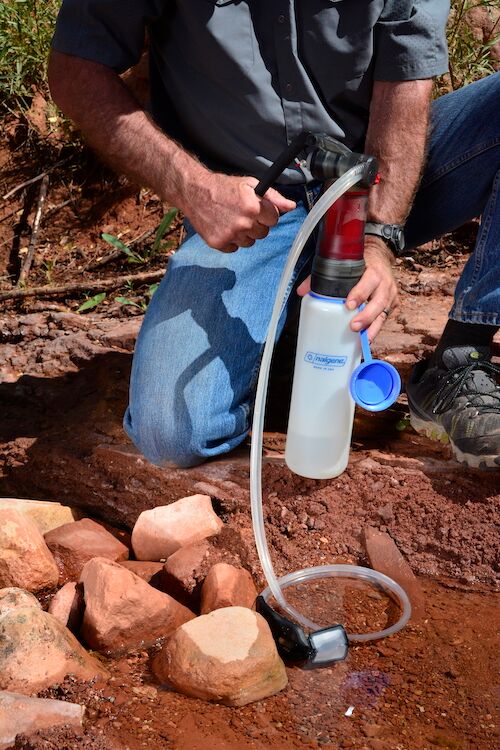
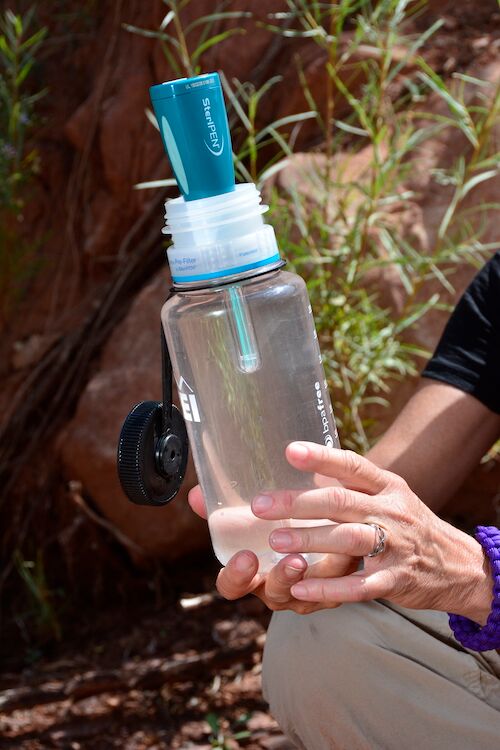
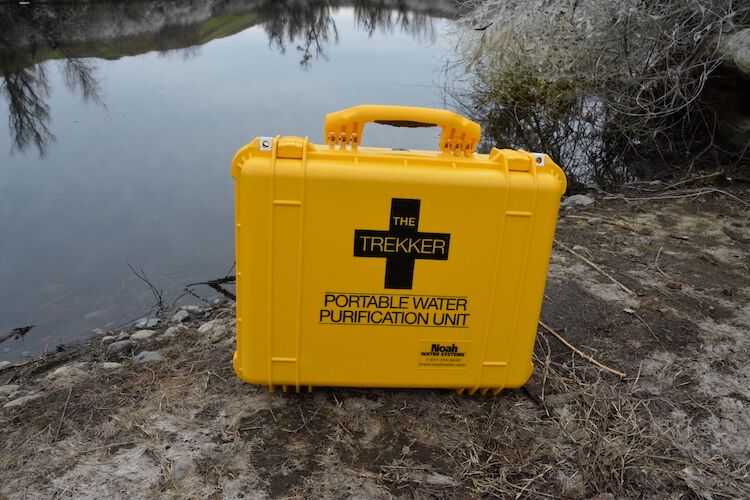
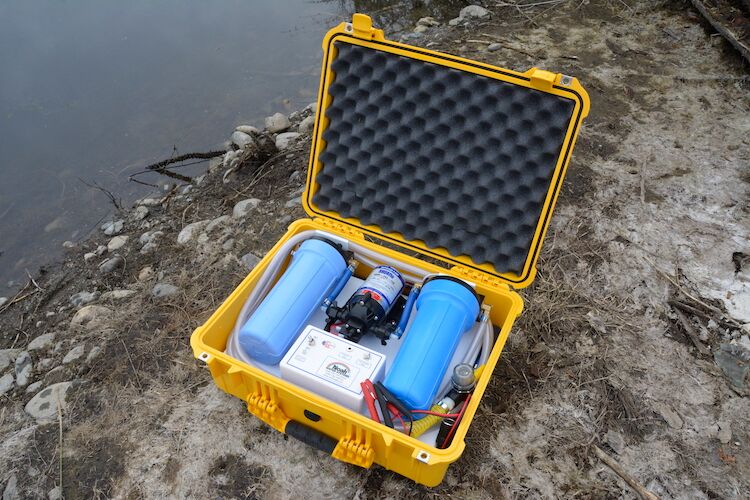
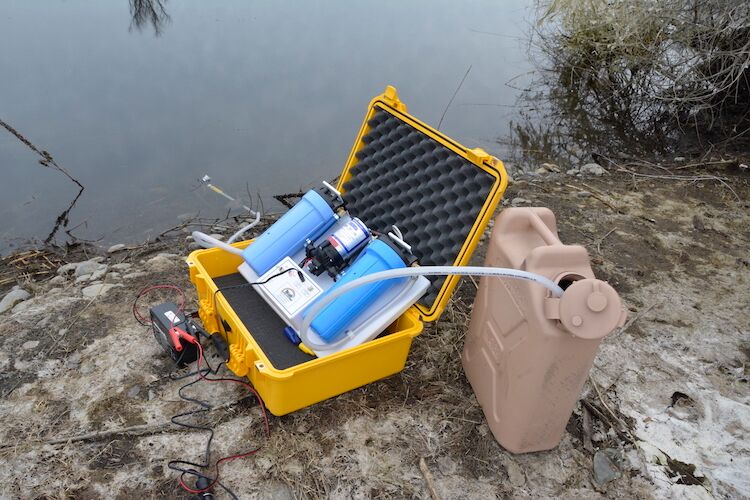







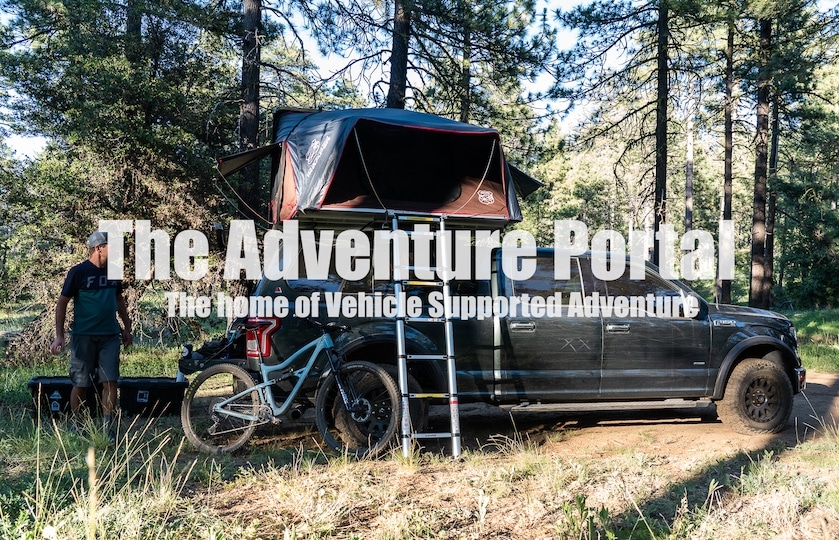
Thanks for the article. But no mention of the many Katadyn brand water filters available.
Alan… Great question. Let me say up front that I have many Katadyn water disinfection products – and they are great. The Adventure Portal holds me to a small amount of words, so I can’t cover everything. I cover Katadyn products in my new book (to be released mid-May), “Live Long to Wander – Basic Survival and Bushcraft for Vehicle-Supported Adventures.” Because the topic is SO HUGE, I’ve already written a follow up book JUST on water disinfection in the field, titled “Belly Up to the Tainted Water Source… If you Dare – Collecting, Storing, and Disinfecting Water in the Field.” I own and use Katadyn’s Hiker Pro, MyBottle, and Base Camp Pro 10L. Notice in THIS article, I said “My Favorite Equipment” – which means “in my opinion.” The equipment listed in this article are my personal “go to” favorites. I will say this about Katadyn… They’ve been a bit slow to release products with hollow fiber technology. Most of their filters use Glass Fiber technology (removing bacteria and protozoa only). They only recently released their BeFree bottle with a CONVENTIONAL hollow fiber filter. Conventional hollow fiber can only filter out cysts (protozoa – largest critters), and bacteria (medium large critters) – NOT viruses (smallest critters). But for $39 you can’t go wrong, unless you are in most 3rd world countries; then you REALLY need to worry about viruses (and petrochemical pollution). So, with the Katadyn BeFree, you’ll still need to add chems (like Katadyn’s Micropur CL dioxide tablets) to kill viruses. Compare that to the MSR Guardian with ULTRA hollow fiber filters… They take out even viruses! And the MSR Guardian is a lifetime filter if you treat it right. But granted you’ll pay almost $300 for that filter. That said… you ever had a water-borne virus infection? Protozoa infection? Not pretty when you are remote and in the backcountry. In North America you are probably safe with all Katadyn filters and NOT adding chems to get rid of viruses. Stay safe…